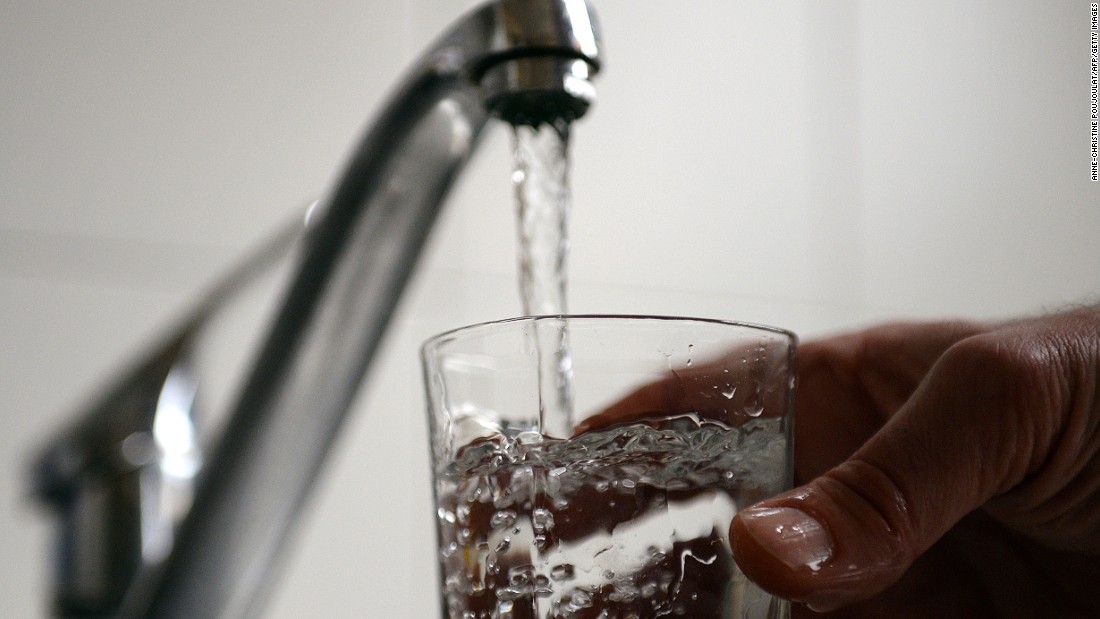New study raises questions about how fluoride affects children’s development

Water fluoridation has been hailed by the US Centers for Disease Control and Prevention as one of the top great public health achievements of the 20th century, but a new study raises questions about its role as a potential neurotoxin in utero.
The study, published in the journal JAMA Pediatrics on Monday, found that increased levels of fluoride exposure during pregnancy were associated with declines in IQ in children. Previous research has made similar findings, but this is the first such study to evaluate the effect of fluoride on populations receiving what the US Public Health Service considers optimal levels of 0.7 milligrams of fluoride per liter of drinking water, such as in the United States and Canada.
The authors of the new study assessed 601 Canadian mother and child pairs, tracking the fluoride exposure of 512 of the mothers by looking at the average concentration of fluoride in urine samples taken throughout their pregnancies as a proxy for prenatal fluoride exposure. The authors also estimated the mothers’ daily fluoride intake by surveying their beverage intake, including tap water.
Between the ages of 3 and 4, all children born from the studied mothers were tested for IQ.
The authors found that for each additional 1 milligram per liter in concentration of fluoride in a mother’s urine, there was a 4.5-point drop in IQ in males. The study did not find such a significant association in female children, nor did it examine why boys were more significantly affected.
The researchers say that further investigation into whether boys are more vulnerable to fluoride neurotoxicity is needed, especially considering that boys have a higher prevalence of neurodevelopmental disorders such as autism and attention-deficit disorder.
The researchers also measured the fluoride intake in 400 of the mothers against their children’s IQ scores. They say this measure might reflect postnatal exposure to fluoride because a child is probably ingesting the same type of water as the mother did during pregnancy.
The authors believe that urine concentration better reflects prenatal exposure. They found that for every 1 mg/L average increase in fluoride intake by a mother, there was a 3.7-point drop in the child’s IQ, regardless of gender.
“At a population level, that’s a big shift. That translates to millions of IQ levels lost,” said study author Christine Till, an associate professor in the Department of Psychology at York University in Toronto.
Till and her colleagues controlled their findings for income and education, as well as other elemental exposures such as lead, mercury, manganese, PFOA and arsenic, but acknowledged that there may be unknown exposures that could have influenced their findings. “There will always be things that we don’t measure, because we didn’t know it existed,” Till said.
Fluoridation remains a contentious issue
Critics pointed to the difference between boys and girls as an issue in the study.
“The gender difference in the results make it difficult to interpret. At this point, the gender difference is problematic,” said Dr. Aparna Bole, chairwoman of American Academy of Pediatrics Council on Environmental Health. Bole said that this research alone won’t change any of the organization’s recommendations to use fluoride to prevent cavities, but “I think the study was well done and that the commentary was thoughtful.”
Grainne McAlonan, professor of translational neuroscience at the Sackler Institute for Translational Neurodevelopment at King’s College London, said that while the findings were statistically significant, not too much could be made of them in a practical sense. “In reality, the average difference in fluoride levels between the majority living in low and high fluoride areas is nowhere near 1mg/L. The average urinary fluoride levels in non-fluoridated areas is 0.4mg/L, while in higher areas, it is almost 0.7mg/L, a difference of only 0.3mg/L,” McAlonan said.
About 66% of all US residents receive fluoridated water, but water fluoridation has been contentious since it was implemented by local municipalities in the 1950s, due to conspiracy theories and health concerns.
Questions about water fluoridation have at times been considered “fringe science,” and the editorial board of JAMA Pediatrics recognized that publishing the paper could invite controversy.
In an editor’s note, journal editor Dr. Dimitri Christakis, director of the Center for Child Health, Behavior and Development at Seattle Children’s Research Institute, wrote that the journal was “committed to disseminating the best science based entirely on the rigor of the methods and the soundness of the hypotheses tested, regardless of how contentious the results may be.”
More research needed
In an additional editorial, David Bellinger, a professor of neurology at Harvard Medical School, wrote that the findings still need to be replicated and that no one study would could determine the safety and efficacy of fluoride. But, he added, “These considerations notwithstanding, the hypothesis that fluoride is a neurodevelopmental toxicant must now be given serious consideration.”
Get CNN Health’s weekly newsletter
In an email to CNN, Dr. Pamela Den Besten, a professor in the University of California San Francisco’s School of Dentistry, said, “Fluoride remains a safe and effective tool for caries prevention.” Den Besten has studied the role of fluoride in fluorosis, a condition that results from excess exposure to fluoride.
However, she also noted that fluoride is most effective in topical applications and added that “my bias, given the findings of this and other studies, is to focus on the delivery of fluoride through strategies that do not require the fluoride to be ingested.” She added that it wouldn’t be unreasonable for pregnant women to use lower-fluoride bottled water during pregnancy instead of tap.
In a statement, the American Dental Association said, “We welcome this and further scientific study of the issue to see if the findings can be replicated with methods that demonstrate more conclusive evidence.”
*** This article has been archived for your research. The original version from CNN can be found here ***

